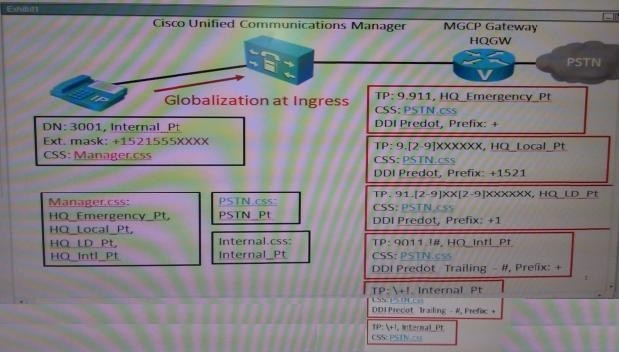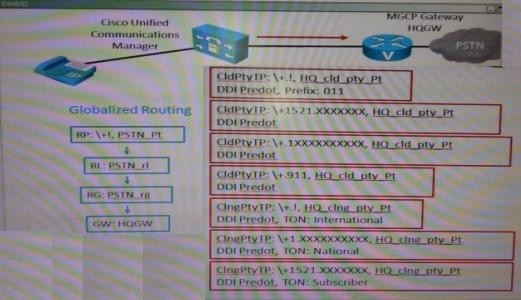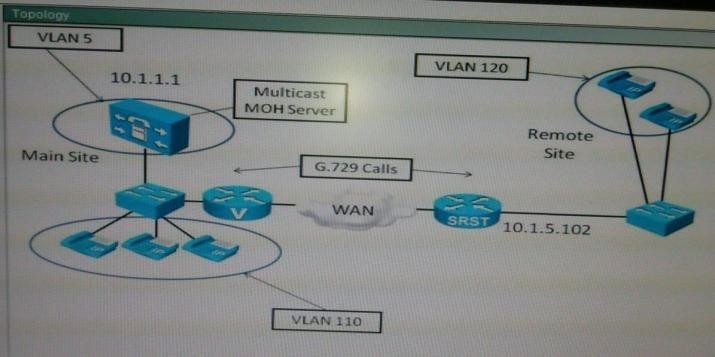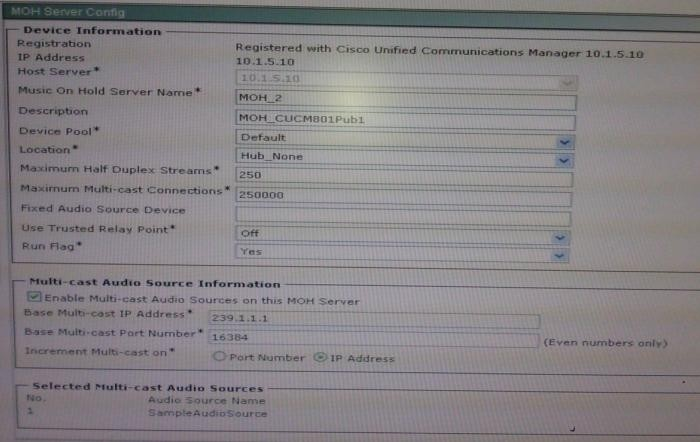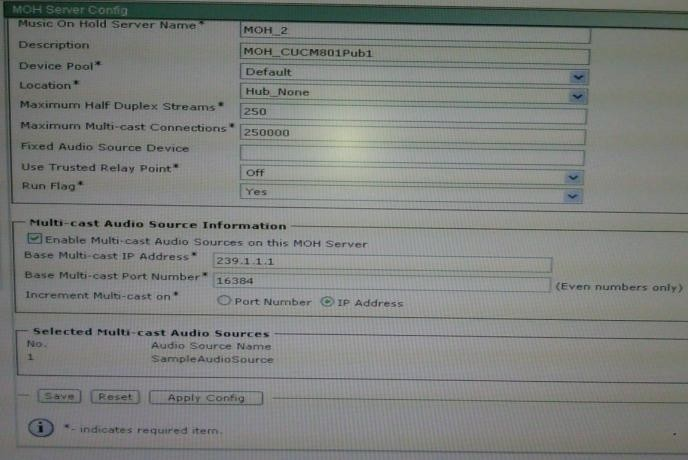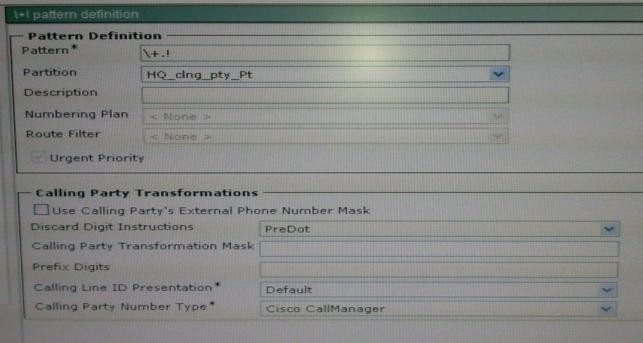Which two configuration changes can correct this issue?
Refer to the exhibit.
IT shows an H.323 gateway configuration in a Cisco Unified Communications Manager environment. An inbound PSTN call to this H.323 gateway fails to connect to IP phone extension 2001. The PSTN user hears a reorder tone. Debug isdn q931 on the H.323 gateway shows the correct called-party number as 5015552001. Which two configuration changes can correct this issue? (Choose two.)
Which statement about enrollment in the IP telephony PKI is true?
Which statement about enrollment in the IP telephony PKI is true? (Source: Understanding Cisco IP Telephony Authentication and Encryption Fundamentals)
Which device is needed to integrate H.320 into the Cisco video solution?
Which device is needed to integrate H.320 into the Cisco video solution? (Source: Introducing IP Video Telephony)
which two types of Call Admission Control can be implemented?
If your IP telephony administrator asks you to configure a local zone for your dial plan to control the volume of calls between two end points in a centralized multisite environment, which two types of Call Admission Control can be implemented? (Choose two.)
which pattern would be advertised?
what is the resulting called and calling number that is sent to the PSTN?
Refer to the following exhibit.
The MGCP gateway has the following configurations:
called party transformation CSS HQ_cld_pty CSS (partition=HQ cld_pty.Pt) call.ng party transformation CSS HQ_clng_pty CSS (partition=HQ_clng_pty Pt)
All translation patterns have the check box “Use Calling Party’s External Phone Number Mask” enabled.
When the IP phone at extension 3001 places a call to 9011 49403021 56001# what is the resulting called and calling number that is sent to the PSTN?
Which Cisco IOS command is used for internal SAF Clients to check SAF learned routes?
Which Cisco IOS command is used for internal SAF Clients to check SAF learned routes?





